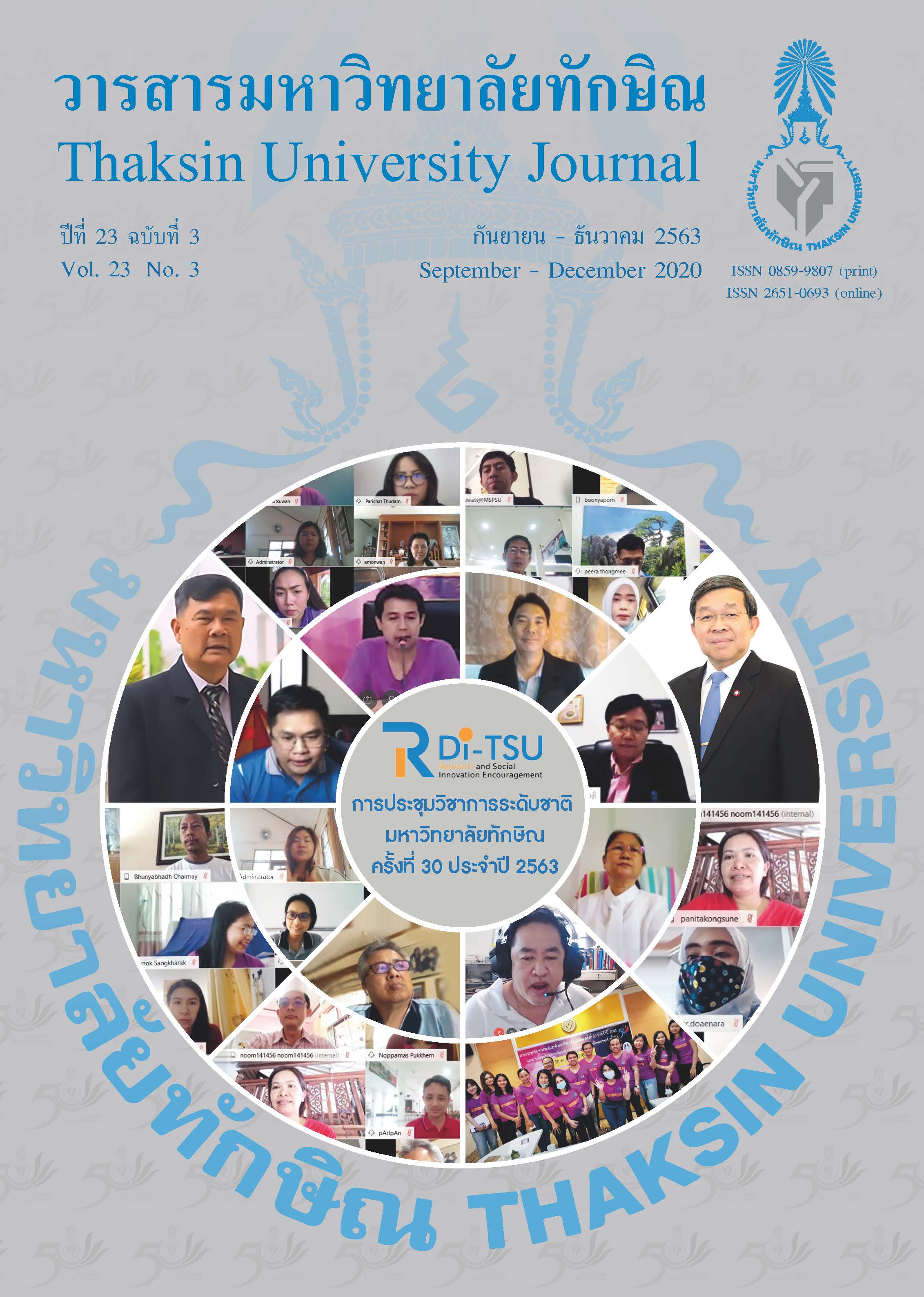Forecasting of Wind Speed Using Advanced Research-WRF Model
Main Article Content
Abstract
This study presents the mesoscale forecasting of wind speed of Thailand using an advanced research-Weather Research and Forecasting (ARW) modeling system. Numerical simulations were carried out for 12 days, with a single modeling domain with a horizontal grid resolution of 9 km centering at Sap Yai district in Chaiyaphum province and Pak Phanang district Nakhon Si Thammarat province by applying initial and boundary conditions provided by FNL (FNL Reanalysis) from the National Centers for Environmental Prediction (NCEP). The case study for the ARW event used the WSM3 scheme for microphysics, Dudhia and RRTM scheme for short-long wave radiation, unified Noah LSM for Noah land surface scheme and YSU scheme for PBL processes. Wind predictions are obtained and compared with real observed data from a mast tower at height of 117.5 m and 120 m above ground level at Sap Yai and Pak Phanang districts respectively. Wind speed prediction was done based on two distinct periods, the first one was during 20-31 December 2017 on Sap Yai district and the second one was during 20-31 May 2012 on Pak Phanang district. Results showed that the Weibull parameters, i.e., k and A based on observed data was 3.58 and 7.63 while obtained from the prediction was 3.61 and 11.20 at Sap Yai district in Chaiyaphum province. For Pak Phanang district, they were found to be 3.09 and 6.91 and 2.79 and 8.87. The statistical error analysis of Sap Yai showed that the value of MAD was percentage 3.43, 2.96, MSE was 13.65, 14.06, RMSE was 3.69, 3.75 and MAPE was 54.05, 83.95 respectively.
Article Details

This work is licensed under a Creative Commons Attribution-NonCommercial-NoDerivatives 4.0 International License.
References
de Freitas, N.C.A., Silva, M. P. dos S., & Sakamoto, M. S. (2018). Wind speed forecasting: a review. International. Journal of Engineering Research and Application, 8(1), 4–9. DOI: 10.9790/9622-0801010409.
Kay, M., & MacGill, I. (2010). Improving weather forecasts for wind energy applications. IOP Conference Series: Earth and Environmental Science, 11, 012009. DOI:10.1088/1755-1315/11/1/012009.
Energy Regulatory Commission and Office of the Energy Regulatory Commission (2019). Annual Report 2018 (Online). Retrieved December 10, 2019, from http://www.erc.or.th/ERCWeb2/Upload/Document/annual%20report/Annual%20Report-%20ERC2018-190919%20FINAL.pdf.
Skamarock, W.C., Klemp, J.B., Dudhia, J., Gill, D.O., Barker, D.M., Duda, M.G., ...Powers, J.G. (2008). A description of the advanced research WRF version 3. NCAR technical note: a description of the advanced research WRF version 3. Boulder, Colorado: National Center for Atmospheric Research.
Dudhia, J., Gill, D., Manning, K., Wang, W., & Bruyere, C. (2005). PSU/NCAR mesoscale modeling system tutorial class notes and user’s guide: MM5 modeling system version 3. Available from NCAR Boulder, USA.
Hari Prasad, K.B.R.R., Srinivas, C.V., Rao, T.N., Naidu, C.V., & Baskaran, R. (2017). Performance of WRF in simulating terrain induced flows and atmospheric boundary layer characteristics over the tropical station Gadanki. Atmospheric Research, 185, 101–117.
Research Data Archive Computational & Information Systems Lab (2000). NCEP FNL Operational Model Global Tropospheric Analyses, continuing from July 1999. (Online). Retrieved January 24, 2020, from https://rda.ucar.edu/datasets/ds083.2/.
Xianguo, L. (2011). Wind speed distribution – a theoretical approach to probability density function. Green Energy. Progress in Green Energy, vol 1. 66–122. London, England: Springer. DOI: https://doi.org/10.1007/978-1-84882-647-2_3.
Che, Y., Chen, L., Zheng, J., Yen, L., & Xiao. F. (2019). A novel hybrid model of WRF and clearness index-based Kalman filter for day-ahead solar radiation forecasting. Applied Sciences, 9(19), 3967. DOI: 10.3390/app9193967.
Siuta, D., West, G., & Stull, R. (2017). WRF hub-height wind forecast sensitivity to PBL Scheme, grid length, and initial condition choice in complex terrain. Weather and Forecasting, 32(2), 493–509.
DuVivier, A. K., & Cassano, J. J. (2013). Evaluation of WRF model resolution on simulated mesoscale winds and surface fluxes near Greenland. Monthly Weather Review, 141(3), 941–963.


